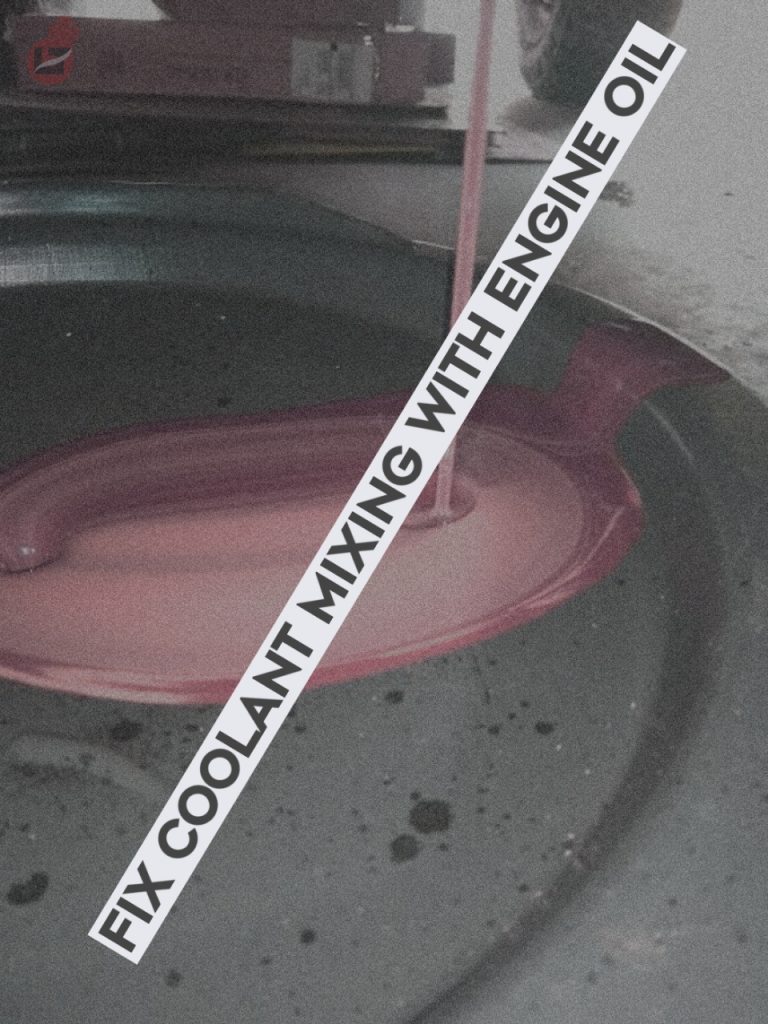Mixing up the coolant with your engine oil doesn’t sound good since it could cause the engine oil to lose its viscosity. Here’s how to fix coolant mixing with engine oil and prevent future leaks.
If you have ever gauged your engine oil and noticed a milky liquid on your stick, it implies a leak somewhere that needs to be addressed.
The main reasons coolant will mix with your Engine oil are a faulty head gasket, a broken engine Block, cracks on the oil cooler, and an overheating engine.
It would be best if you sorted out the actual reason behind the leaks before you swing into fixing it.
Also, failure to address this issue one time will lead to a fatal engine knock, probably due to the oil being unable to prevent friction.
Continue reading to see the symptoms and causes and find the perfect fix to coolants mixing with engine oil.
Why Do Coolants Mix with Engine Oil?
Here are the most probable reasons why a Coolant leak will occur in your car.
1. Faulty Head Gasket
A damaged gasket head is one of the reasons why coolant will leak into your Engine oil. This can usually be identified with a cloud of white smoke from your exhaust.
2. Blown Gasket Head
The primary function of the gasket head is to prevent coolants (antifreeze) from getting into the oil. For this task, it’s located between the cylinder and engine block.
Any defect will cause the motor oil and coolant to mix, resulting in overheating.
3. Cracks in the Oil Cooler
This is another unique place to find a mixture of oil and coolants. The oil cooler has segments that hold the oil and coolants. Any cracks could cause the motor oil to mix with the antifreeze.
4. Defective Engine Block
Faults or cracks on the engine blocks could lead to leaks; though this is almost impossible due to the strength of the engine block, it’s still vital that you inspect it.
5. Overheating Engine
Excess heat could cause your head gasket to blow, mixing both fluids up.
How to Fix Coolant Mixing with Engine Oil?
Detecting the primary cause of an engine leak could be tedious, so I advise you to seek a mechanic’s service, except if you are grounded mechanically.
Since the first thing that comes to mind when coolant leaks into the motor oil is a faulty head gasket, you should inspect your gasket first.
Followed by the oil cooler, check if your engine is overheating and cracks in the Block.
Do any of the following to fix the problem.
1. Head Gasket Replacement
The first thing to do is check for blown head gaskets and replace them instantly. This should also address the issue of a leaky head gasket.
You can take your car to a nearby auto repair shop for removal and replacement. They will also inform you if the mixture hasn’t resulted in any issues and offer fixes.
2. Place a Steel Sealant on the Radiator
While this is a temporary fix, it works perfectly, especially when you don’t have the financial capability to get a new head gasket.
First, Drain and refill your coolant, then loosen the bolts holding the thermostat housing to remove the thermostat.
Next, you must bolt the thermostat housing, leaving the thermostat; this is needed to create enough space for the steel Sealant to close the leakage.
Now, you’ll need to check the spark plug coils and loosen the ones with coolant. You can also unplug the cylinder injector to avoid misfiring.
Next, pour the steel seals into the Radiator crank the engine, and let it idle for about 30 minutes (it might produce lots of Mosier due to the absence of spark plugs)
Turn off the engine and let it cool off before repeating it 3-4 more times.
Now, please leave it to dry overnight without the spark plug in the hole; the same is true with the thermostat.
You can now tighten the spark plug once it’s dawn, start your engine, and accelerate slowly to give the Sealant a better chance of circulating.
That’s it.
3. Run checks on your Engine Block
The last option is to check your engine for any cracks and seek your mechanic’s attention for the best fix.
How to Identify Coolant in Motor Oil?
If you notice any of the signs below on your car, you’ll need to check the engine oil for mixtures.
- Constant drainage of Coolants
- Color residue on the crankcase – brown, green, orange, and red resulting in a milky color
- The sweet smell from the engine bay.
As an Amazon Service LLC Program Associate, V. Auto Basics earns from qualifying purchases. See Our Affiliate disclaimer.
